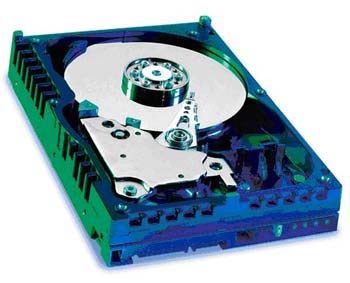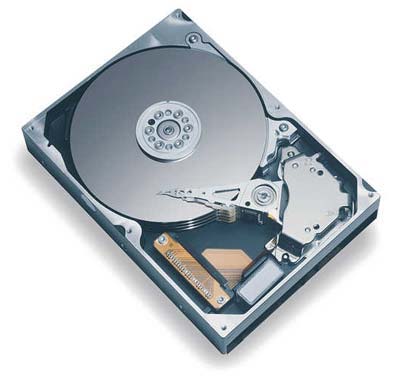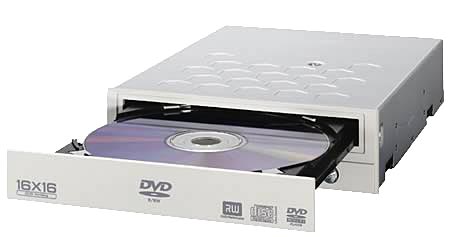High End Buyer's Guide - September 2004
by Wesley Fink on August 30, 2004 12:22 AM EST- Posted in
- Guides
Hard Drives
Recommended: Dual Western Digital Raptor 74GB 10,000RPM SATAPrice: $356 shipped
As Anand found in his first review with the new storage benchmarking system, there is Western Digital Raptor and there is everything else. It is hard to argue with the choice of the top Raptor drives in a system geared to get the most possible from your computer.

The problem with the top Raptor drives is that they are still relatively small as hard drives go, so we are recommending two drives in a RAID 0, RAID 1, JBOD, or just plain 2-drive setup. Anand has shown that there is little performance advantage to RAID 0, but striping is still useful for improving boot times. It can improve performance in multi-tasking situations, which are admittedly rare on the desktop. RAID 1, on the other hand, is useful in protecting against hard drive failure, which is always a risk when pushing a system to its limits with overclockers. Frankly, many overclockers keep a second hard drive with known good images to restore hard drives that end up in data corruption in overclocking attempts, which is another great use for the second Raptor hard drive.
The storage capacity for two 74GB WD Raptor drives is a rational 148GB of fast access storage. Compared to SCSI RAID solutions with similar performance, the 2 Raptors are a virtual bargain. The 74GB Raptors have double the storage of the legendary 36.7GB Raptors, an increase in speed, and the same 8MB buffer. We are also pleased to see a price drop in the 74GB Raptors of almost $20 for the pair this month.
The 5-year warranty for the Raptor drives makes this investment in high-speed storage a little easier to handle. All Drives will fail at some point because they have moving parts, but you have warranty reassurance for 5 years that attest to the quality of these WD Raptor hard drives. Previously, 10,000RPM speeds or a 5-year warranty were features only found on enterprise/SCSI drives, but they have now reached our high-end system desktop.
Alternative: Seagate ST3200822AS (200GB) Baracuda SATA 7200RPM (8MB cache)
Price: $129 shipped

While 7200RPM drives, including our alternative Seagate Barracuda 200GB SATA, are not as fast as the Western Digital Raptor 10,000RPM SATA drives, they are still plenty fast for most applications. Seagate offers the same 8MB cache as the Raptor drives and very large 200GB storage capacity for a small $130 price. While the well-known Seagate drives offer impressive specifications, the most important feature of the Seagate 200GB is not something that you can see. With some hard drive manufacturers reducing warranties to one year, the Seagate 200GB now carries a 5-year manufacturers warranty.
If 200GB seems a massive amount of storage, it will be just what the doctor ordered for users of Digital Cameras, Digital Video, and digital music storage. With this Seagate delivering hard drive capacities at about 65 cents per Gigabyte, this drive also delivers excellent value.
We have moved our alternative recommendation from IDE to SATA for the simple reason that the new Intel 925X/915 chipset only provided one IDE connector for 2 devices, but 4 SATA connectors. If you plan to use the alternative drive selection for the Athlon 64 system, you can choose the same Seagate as an IDE model for just $119 including shipping.
We see no real reason to recommend a SATA drive over IDE unless there are features like speed or RAID or NCQ or connectors that make the SATA a better choice. There is also no reason not to choose SATA if you prefer the narrow cables, but please keep in mind that SATA connectors are still very fragile and more easily broken than the admittedly bulky, but durable, IDE connector.
Optical
Recommendation: Pioneer 108D 16X Dual Layer DVD+/-RWPrice: $97 shipped

The Pioneer 108D has become the new favorite at AnandTech as you will see in our upcoming review. Sporting 16X DVD + or - burn speeds, 4X Dual-Layer burn capabilities, and 4X DVD+/-RW writing, the 108D is certainly impressive on paper. It was just as impressive in the flesh, managing to take many of the test media to new high speeds in reliable writing. At just under $100, this is a truly remarkable DVD writer and an incredible value compared to the top DVD burners of just a few months ago.
While we have not yet tested the NEC 3500A, it is an almost identical drive with similar specs based on the same technology. The NEC does support slightly faster CD burn/read times (48X/48X vs 32X/40X) and it also supports bit-setting for those looking for that feature. If the NEC performs as well in our burn tests as the Pioneer performed, it will become our recommended drive at a price that is a few dollars cheaper.
Listed below is part of our RealTime pricing engine, which lists the lowest prices available on storage from many different reputable vendors:
If you cannot find the lowest prices on the products that we've recommended on this page, it's because we don't list some of them in our RealTime pricing engine. Until we do, we suggest that you do an independent search online at the various vendors' web sites. Just pick and choose where you want to buy your products by looking for a vendor located under the "Vendor" heading.










53 Comments
View All Comments
Wesley Fink - Wednesday, September 1, 2004 - link
Uff -The two FX53 I've tested both run fine at 2.6GHz (future FX55 spec) with stock cooling. While you will get more potential with better cooling, you are not locked out of using a higher multiplier just because you use stock cooling. The AMD Retail HSF does a decent job of cooling, though there are certainly better solutions available.
Uff - Wednesday, September 1, 2004 - link
My point with FX-53 and stock cooling was exactly that: the main bonus you get with FX-53 is that it's multiplier unlocked but to make any use of that you need proper cooling.Wesley Fink - Wednesday, September 1, 2004 - link
#40 - The DVD prices were pulled at slightly different times for the Recommended and Alternate systems. For consistency, both charts now show a $97 price for the Pioneer 108. Prices constantly change, so any published price will generally be off in a few days or weeks.Goi - Tuesday, August 31, 2004 - link
Why is it that the DVD burner in the recommended high-end system costs $97 yet the exact same one in the alternate high-end system costs $96?krawl3r - Tuesday, August 31, 2004 - link
every single time, these guides ignore 2 of the best PSUs on the market: the PC Power and Cooling 510Deluxe which is miles ahead of the antec. Also ignored is the Fortron 530s. In my experience, the Fortrons are at least on par with the Antecs of not equal.P.S. If you spend the money on an FX-53 you might as well get a server board and go with the 940pin version so you can plug in a SCSI RAID card and have an array of 73GB 15k drives....just my $0.02
neogodless - Tuesday, August 31, 2004 - link
There is no "be all, end all" guide to anything, particularly in a rapidly changing technology environment. This guide is merely a guide. A place to start from, and go from there. They recommend getting the keyboard and mouse that is right for you, whether it be $70 or $10. However, I think there may be some logic in requesting that there's more of a reasonable scale from budget, mainstream, and high-end. This high-end guide tries to balance having enough money to buy the fastest computer with trying to make it affordable to a relatively wide audience, but really, I think there may be a different way to go about it. I think you could save a lot of money for a minimally slower computer, and by doing that, saving money for your next high-end machine. If you get the absolutely fastest machine, then there really should be no limits on money, and it should really be a no budget dream machine. If you're on a budget, even if it's $5000, you might want to be a little tiny bit stingier, and make sure that six months or a year from now, you still have a good budget for getting a high end rig.The only typo I saw was "could care less" in the audio section. Should be "couldn't care less".
The guides are a lot of work, and I think they are somewhat reasonable starting points. I appreciate them, even though I don't really use them for my own purchasing decisions. They are interesting, and hopefully helpful to some people.
jbritt1234 - Tuesday, August 31, 2004 - link
How can you build a $3500 PC and then suggest a $10 mouse??? That's crazy! Lost a little respect for ya there.Wesley Fink - Tuesday, August 31, 2004 - link
Uff - The improvements from Dual-Channel and 1024k cache vs. 512k cache are cumulative. So while either improvement alone is only 2 to 4% improvement, together the added cache and dual channel make the FX53 5% to 8% faster than the SC 512k 3700+ you suggest. If you want the top performance then the FX53 is the fastest.The FX53 is also completely unlocked, up and down, unlike the 3700+, 3800+, 3500+, or 3400+, which makes it possible to run at 2.6GHz for example at DDR400. All Athlon 64 are unlocked down, but only the FX is completely unlocked.
Uff - Tuesday, August 31, 2004 - link
I'm just wondering why anyone in their right mind would buy an FX-53 and run it on stock cooling? Other than making more space in your room by taking out some of the spare piles of money, there is no real gain in it compared to say 3700+ (or even a 2.4GHz 3400+, since tests have shown little gain from the extra 512kb cache).Caligynemania - Tuesday, August 31, 2004 - link
I am surprised that you reccomend mere computer speakers for a high end system. A receiver/speaker system (albeit more expensive) would be more appropriate for a high end system. I realize that this is outside the scope of a computer buyer's guide, but I think anyone who truly appreciates music/sound/noise would be willing to spend the $500 for a set of speakers that will last a lifetime (speakers dont go obselete or break). Combined with a good receiver (additional $100) you can output amazing sound from the radio, tv, computer, dvd. For $500 you can get the amazing NHT SB3 speaker system or the Klipsch RB25's.